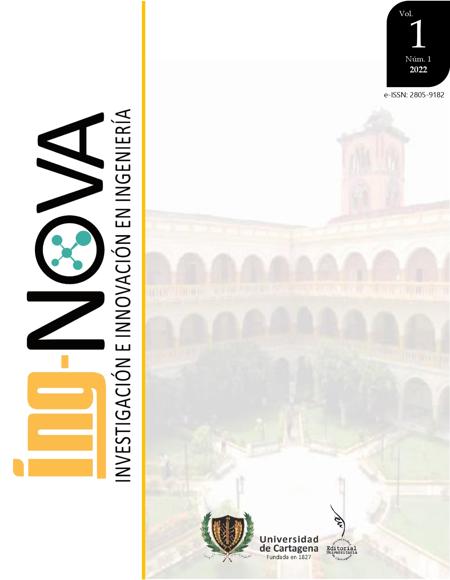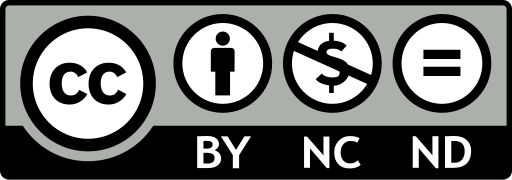Aspectos sensoriales de un néctar de fruta con adición de micelios obtenidos por fermentación sumergida
Sensory aspects of a fruit nectar with the addition of mycelia obtained by submerged fermentation
Contenido principal del artículo
Resumen
Los hongos comestibles o setas poseen compuestos biológicos que han despertado gran interés entre la comunidad científica y agroindustrial debido a que presentan un gran potencial de uso al ser catalogados como nutracéuticos. Es por esto, que en los últimos años ha tomado importancia el desarrollo de estudios que conduzcan al aprovechamiento de setas comestibles a través de procesos biotecnológicos, buscando un incremento conjunto de los compuestos de interés que lo convierten en alimento funcional por excelencia. En esta investigación, se trabajó con una cepa Pleurotus ostreatus, la cual fue cultivada con fermentación en estado líquido (FEL) en harina de maíz amarillo burdo, la cual se observó indujo en el hongo la producción de biomasa fúngica con mayor valor nutracéutico. Este micelio fue adicionado de tal manera que aportará cantidad suficiente de compuestos bioactivos en la formulación de un néctar de mango. A este último se le realizó una prueba sensorial para determinar el grado de aceptación por un público objetivo. Se encontró que la adición del micelio no afecta atributos como textura, olor y apariencia general, requiriendo la adición de aditivos enmascarantes de color y sabor para mejor su aceptabilidad general. El néctar de mango resultó en una estrategia prometedora para la incorporación de micelio de P. ostreatus como fuente de compuestos bioactivos.
Descargas
Datos de publicación
Perfil evaluadores/as N/D
Declaraciones de autoría
Indexado en
- Sociedad académica
- Universidad de Cartagena
- Editorial
- Universidad de Cartagena
Detalles del artículo
Referencias (VER)
World Health Organization and W. H. Organization, World Health statistics 2019. 2019.
K. P. Conroy, I. M. Davidson, and M. Warnock, “Pathogenic obesity and nutraceuticals,” Proc. Nutr. Soc., vol. 70, no. 04, pp. 426–438, 2011, doi: 10.1017/S0029665111001662 DOI: https://doi.org/10.1017/S0029665111001662
K. Gul, A. K. Singh, and R. Jabeen, “Nutraceuticals and Functional Foods: The Foods for the Future World,” Crit. Rev. Food Sci. Nutr., vol. 56, no. 16, pp. 2617–2627, 2016, doi: 10.1080/10408398.2014.903384 DOI: https://doi.org/10.1080/10408398.2014.903384
J. P. da Costa, “A current look at nutraceuticals – Key concepts and future prospects,” Trends Food Sci. Technol., vol. 62, pp. 68–78, 2017, doi: 10.1016/j.tifs.2017.02.010. DOI: https://doi.org/10.1016/j.tifs.2017.02.010
M. A. Khan and M. Tania, “Nutritional and medicinal importance of Pleurotus mushrooms: an overview,” Food Rev. Int., vol. 28, no. 3, pp. 313–329, 2012. DOI: https://doi.org/10.1080/87559129.2011.637267
S. A. Heleno et al., “Nutritional value, bioactive compounds, antimicrobial activity and bioaccessibility studies with wild edible mushrooms,” LWT - Food Sci. Technol., vol. 63, no. 2, pp. 799–806, 2015, doi: 10.1016/j.lwt.2015.04.028. DOI: https://doi.org/10.1016/j.lwt.2015.04.028
P. C. K. Cheung, Mushrooms As Functional Foods. New Jersey: John Wiley & Sons, 2008. DOI: https://doi.org/10.1002/9780470367285
K. S. P. Devi, B. Roy, P. Patra, B. Sahoo, S. S. Islam, and T. K. Maiti, “Characterization and lectin microarray of an immunomodulatory heteroglucan from Pleurotus ostreatus mycelia,” Carbohydr. Polym., vol. 94, no. 2, pp. 857–865, 2013, doi: 10.1016/j.carbpol.2013.02.017. DOI: https://doi.org/10.1016/j.carbpol.2013.02.017
I. Giavasis, “Polysaccharides from Medicinal Mushrooms for Potential Use as Nutraceuticals,” in Polysaccharides: Natural Fibers in Food and Nutrition, no. September, CRC Press, 2014, p. 171.
Z. Xue et al., “Antitumor and immunomodulatory activity of pleurotus eryngii extract,” J. Food Biochem., vol. 39, no. 1, pp. 19–27, 2015, doi: 10.1111/jfbc.12096. DOI: https://doi.org/10.1111/jfbc.12096
P. Kalač, Edible mushrooms - Chemical composition and nutritional value. Elsevier, Academic Press, 2016. DOI: https://doi.org/10.1016/B978-0-12-804455-1.00002-3
G. Ma, W. Yang, L. Zhao, F. Pei, D. Fang, and Q. Hu, “A critical review on the health promoting effects of mushrooms nutraceuticals,” Food Sci. Hum. Wellness, vol. 7, no. 2, pp. 125–133, Jun. 2018, doi: 10.1016/j.fshw.2018.05.002. DOI: https://doi.org/10.1016/j.fshw.2018.05.002
G. H. Hansen, M. Lübeck, J. C. Frisvad, P. S. Lübeck, and B. Andersen, “Production of cellulolytic enzymes from ascomycetes: Comparison of solid state and submerged fermentation,” Process Biochem., vol. 50, no. 9, pp. 1327–1341, 2015, doi: 10.1016/j.procbio.2015.05.017. DOI: https://doi.org/10.1016/j.procbio.2015.05.017
S. T. Chang, “Overview of Mushroom Cultivation and Utilization as Functional Foods,” Mushrooms as Funct. Foods, pp. 1–33, 2009, doi: 10.1002/9780470367285.ch1. DOI: https://doi.org/10.1002/9780470367285.ch1
C. S. Arango, I. J. Nieto, C. Suárez Arango, and I. J. Nieto, “Cultivo biotecnológico de macrohongos comestibles: una alternativa en la obtención de nutracéuticos,” Rev. Iberoam. Micol., vol. 30, no. 1, pp. 1–8, 2013, doi: 10.1016/j.riam.2012.03.011. DOI: https://doi.org/10.1016/j.riam.2012.03.011
N. Cohen et al., “Chemical composition and nutritional and medicinal value of fruit bodies and submerged cultured mycelia of culinary-medicinal higher basidiomycetes mushrooms,” Int. J. Med. Mushrooms, vol. 16, no. 3, pp. 273–291, 2014, doi: 10.1615/IntJMedMushr.v16.i3.80. DOI: https://doi.org/10.1615/IntJMedMushr.v16.i3.80
M. L. Fazenda, R. Seviour, B. McNeil, and L. M. Harvey, “Submerged culture fermentation of ‘Higher Fungi’: the Macrofungi,” in Advances in applied microbiology, vol. 63, 2008, pp. 33–103. DOI: https://doi.org/10.1016/S0065-2164(07)00002-0
C. Chegwin-Angarita, I. Nieto-Ramírez, and S. C., “Inóculo líquido: una alternativa para el cultivo de hongos del género Pleurotus,” Rev. Latinoam. Química, vol. 42, no. 1, pp. 42–49, 2014.
M. E. Valverde, T. Hernández-Pérez, and O. Paredes-López, “Edible mushrooms: improving human health and promoting quality life,” Int. J. Microbiol., vol. 2015, 2015. DOI: https://doi.org/10.1155/2015/376387
G. Chen et al., “Hypocholesterolemic effects of Auricularia auricula ethanol extract in ICR mice fed a cholesterol-enriched diet,” J. Food Sci. Technol., vol. 48, no. 6, pp. 692–698, 2011, doi: 10.1007/s13197-010-0196-9. DOI: https://doi.org/10.1007/s13197-010-0196-9
A. M. de Miranda, J. V. Rossoni Júnior, L. Souza e Silva, R. C. dos Santos, M. E. Silva, and M. L. Pedrosa, “Agaricus brasiliensis (sun mushroom) affects the expression of genes related to cholesterol homeostasis,” Eur. J. Nutr., vol. 56, no. 4, pp. 1707–1717, 2017, doi: 10.1007/s00394-016-1217-x. DOI: https://doi.org/10.1007/s00394-016-1217-x
A. Gil-Ramirez et al., “Water-soluble compounds from Lentinula edodes influencing the HMG-CoA reductase activity and the expression of genes involved in the cholesterol metabolism,” J. Agric. Food Chem., vol. 64, no. 9, pp. 1910–1920, 2016, doi: 10.1021/acs.jafc.5b05571. DOI: https://doi.org/10.1021/acs.jafc.5b05571
A. Gil-Ramírez et al., “Modulation of cholesterol-related gene expression by ergosterol and ergosterol-enriched extracts obtained from Agaricus bisporus,” Eur. J. Nutr., pp. 1–17, 2015. DOI: https://doi.org/10.1007/s00394-015-0918-x
“En negocio del Champiñon, Setas Colombianas domina,” El Tiempo, Nov. 24, 2005.
S. Dutta, “Role of mushrooms as nutraceutical an overview,” Int. J. Pharma Bio Sci., vol. 4, no. 4, pp. B59–B66, 2013, doi: ISSN 0975-6299.
S. Prasad, H. Rathore, S. Sharma, and A. S. S. Yadav, “Medicinal Mushrooms as a Source of Novel Functional Food,” Int J Food Sci Nutr Diet, vol. 4, no. 5, pp. 221–225, 2015, doi: ISSN 2326-3350. DOI: https://doi.org/10.19070/2326-3350-1500040
B. S. Teng et al., “A protein tyrosine phosphatase 1B activity inhibitor from the fruiting bodies of Ganoderma lucidum (Fr.) Karst and its hypoglycemic potency on streptozotocin-induced type 2 diabetic mice,” J. Agric. Food Chem., vol. 59, no. 12, pp. 6492–6500, 2011, doi: 10.1021/jf200527y. DOI: https://doi.org/10.1021/jf200527y
G. Chandrasekaran, Y.-C. Lee, H. Park, Y. Wu, and H.-J. Shin, “Antibacterial and antifungal activities of lectin extracted from fruiting bodies of the Korean cauliflower medicinal mushroom, Sparassis latifolia (Agaricomycetes),” Int. J. Med. Mushrooms, vol. 18, no. 4, pp. 291–299, 2016, doi: 10.1615/IntJMedMushrooms.v18.i4.20. DOI: https://doi.org/10.1615/IntJMedMushrooms.v18.i4.20
R. Soares et al., “Maitake (D fraction) mushroom extract induces apoptosis in breast cancer cells by BAK-1 gene activation.,” J. Med. Food, vol. 14, no. 6, pp. 563–572, 2011, doi: 10.1089/jmf.2010.0095. DOI: https://doi.org/10.1089/jmf.2010.0095
X. Liu et al., “Glucosidase inhibitory activity and antioxidant activity of flavonoid compound and triterpenoid compound from Agrimonia Pilosa Ledeb,” BMC Complement. Altern. Med., vol. 14, no. 174, 2014, doi: 10.1186/1472-6882-14-12. DOI: https://doi.org/10.1186/1472-6882-14-12
J. Wang, C. Wu, Y. Chen, C. Chen, S. Hu, and S. Chang, “Antihyperglycemic Activity of Exopolysaccharide Produced by Mushroom Pleurotus ferulae with Submerged Liquid Culture on Streptozotocin-induced Diabetic Rats,” J. Food Nutr. Res., vol. 2, no. 7, pp. 419–424, 2014, doi: 10.12691/jfnr-2-7-15. DOI: https://doi.org/10.12691/jfnr-2-7-15
B. Chatterjee and T. Patel, “Edible mushroom - A nutritious food improving human health,” Int. J. Clin. Biomed. Res., vol. 2, no. 1, pp. 34–37, 2016, doi: 10.1080/0141987042000290328. DOI: https://doi.org/10.1080/0141987042000290328
J. Kim, S. M. Lee, I. Y. Bae, H. Park, H. Gyu Lee, and S. Lee, “(1–3)(1–6)‐β‐Glucan‐enriched materials from Lentinus edodes mushroom as a high‐fibre and low‐calorie flour substitute for baked foods,” J. Sci. Food Agric., vol. 91, no. 10, pp. 1915–1919, 2011. DOI: https://doi.org/10.1002/jsfa.4409
T. Okamura, Y. Nishikawa, N. Okuda, and M. Ohsugi, “Effects of adding mushrooms to dough on gas production and loof volume, J,” Cook. Sci. Jpn, vol. 31, no. 865, pp. 30–36, 1998. DOI: https://doi.org/10.1080/002075498193732
T. Okamura-Matsui, T. Tomoda, S. Fukuda, and M. Ohsugi, “Discovery of alcohol dehydrogenase from mushrooms and application to alcoholic beverages,” J. Mol. Catal. B Enzym., vol. 23, no. 2–6, pp. 133–144, 2003, doi: http://dx.doi.org/10.1016/S1381-1177(03)00079-1 DOI: https://doi.org/10.1016/S1381-1177(03)00079-1
H. XuJie, Z. Na, X. SuYing, L. ShuGang, and Y. BaoQiu, “Extraction of BaChu mushroom polysaccharides and preparation of a compound beverage,” Carbohydr. Polym., vol. 73, no. 2, pp. 289–294, 2008, doi: http://dx.doi.org/10.1016/j.carbpol.2007.11.033 DOI: https://doi.org/10.1016/j.carbpol.2007.11.033
R. Tafur, J. Toro, J. Perfetti, D. Ruiz, and J. Morales, Plan Nacional frutícola 2006. Cali - Colombia: Asociación hortifrutícola de Colombia, 2006.
A. Asif et al., “Therapeutic potentials of bioactive compounds from mango fruit wastes,” Trends Food Sci. Technol., vol. 53, pp. 102–112, 2016, doi: 10.1016/j.tifs.2016.05.004 DOI: https://doi.org/10.1016/j.tifs.2016.05.004
B. M. Watts, G. L. Ylimaki, and L. E. Jeffery, Métodos sensoriales básicos para la evaluación de alimentos, 3°. Otawwa: Centro Internacional de Investigaciones para el Desarrollo, 1992.
Ministerio de Salud y Protección Social, RESOLUCION 3929 de 2013.
C. Vega-Oliveros, “Comparación de la producción de metabolitos secundarios bioactivos con dos fuentes de carbono en la fermentación líquida de una especie de Pleurotus y su uso potencial en un alimento de tipo funcional,” Universidad Nacional de Colombia, 2016.
F. M. Clydesdale, “Critical Reviews in Food Science and Nutrition Color as a factor in food choice Color as a Factor in Food Choice,” Crit. Rev. Food Sci. Nutr., vol. 33, no. 1, pp. 83–101, 1993, [Online]. Available: file:///Users/carolinavegaoliveros/Library/Application Support/Mendeley Desktop/Downloaded/Clydesdale - 1993 - Critical Reviews in Food Science and Nutrition Color as a factor in food choice Color as a Factor in Food Choice.pdf. DOI: https://doi.org/10.1080/10408399309527614
J. Politowicz et al., “Volatile composition and sensory profile of oyster mushroom as affected by drying method,” Dry. Technol., vol. 36, no. 6, pp. 685–696, 2018, doi: 10.1080/07373937.2016.1274903 DOI: https://doi.org/10.1080/07373937.2016.1274903



 PDF
PDF
 FLIP
FLIP






